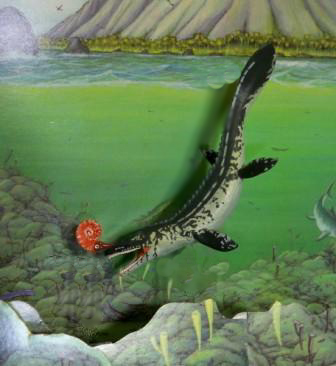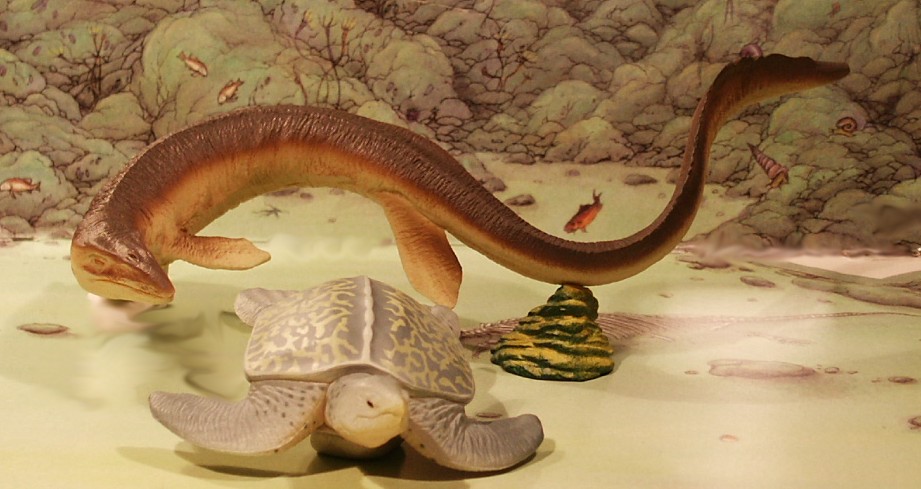
The Late Cretaceous Sea
the mosasaurs
from the Dinosaur Collector
Sea levels were high during the Cretaceous Period, causing marine transgressions in many parts of the world and a great inland seaway in what is now North America. Mosasaurs were marine predators and are now considered to be the closest relatives of snakes. They evolved from semi-aquatic lizards, aigialosaurs, close relatives of modern-day monitor lizards, in the Early Cretaceous Period. During the last 20 million years of the Cretaceous Period mosasaurs diversified and became the dominant marine predators worldwide. Something in the environment seemed to favor these marine lizards. Mosasaurs shared the ocean with giant turtles, huge fish and there were giant sharks like Cretoxyrhina. Swarms of smaller sharks called Squalicorax scavenged carcasses of dead animals, and may have preyed on the sick and injured. The unexplained extinction ichthyosaurs and pliosaurs and the spread of shallow seas seemed to have created an opportunity.
Updated 092714 proof 100306 rjk
More Diorama Pages
Back to the Cretaceous Sea ![]()
![]() Next page tylosaurs
Next page tylosaurs
Mosasaurus (Meuse-River lizard) size 59 feet long lived in Europe.
Mosasaurus was the first genus of mosasaurs to be named. It was much more robust than tylosaurine mosasaurs. At 10 m long Mosasaurus was as heavy as a fifteen meter long Tylosaurus.

A full-grown Mosasaurus had a 6-foot long skull with 4-foot jaws, capable of opening 3 feet apart.

Like modern constrictors and other types of mosasaurs, the lower jaws were two separate units and could spread apart at the anterior end, stretching to give this amazing creature the ability to swallow huge prey.
The relative abundance of small, immature mosasaurs living in a hostile
mid-ocean environment, hundreds of miles from land or sheltered areas
seems to indicate that mosasaurs lived in groups and protected their
young. They shared the shallow seas with crocodilians that reached
similar size ranges. The difference seems to be most of the
crocodilians did retain a land connection and while the adults shared
the shallow seas and brackish bays with mosasaurs the young lived in
fresh water environments, moving to a marine environment only when they
reached a certain size. These differences may be why crocodiles and
their relatives survived. Marine reptiles we among the groups hard hit
by the terminal extinction event at the end of the Cretaceous.
Back to the Cretaceous Sea ![]()
![]() Next page tylosaurs
Next page tylosaurs
|
|